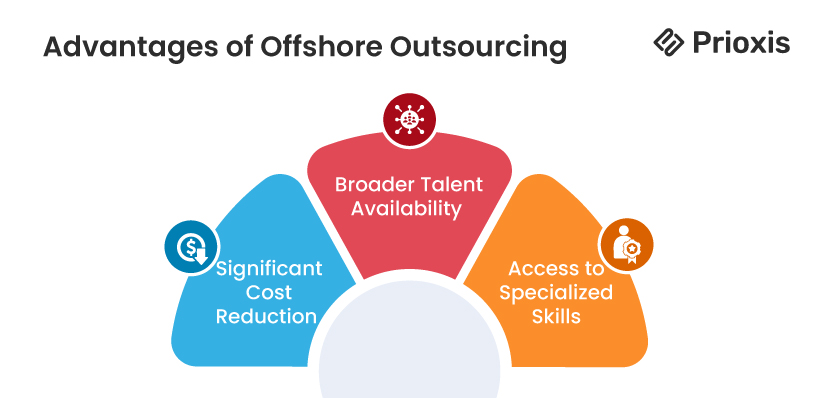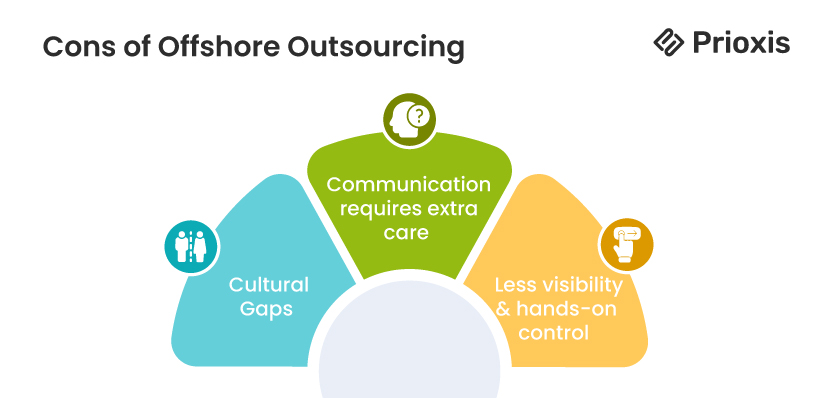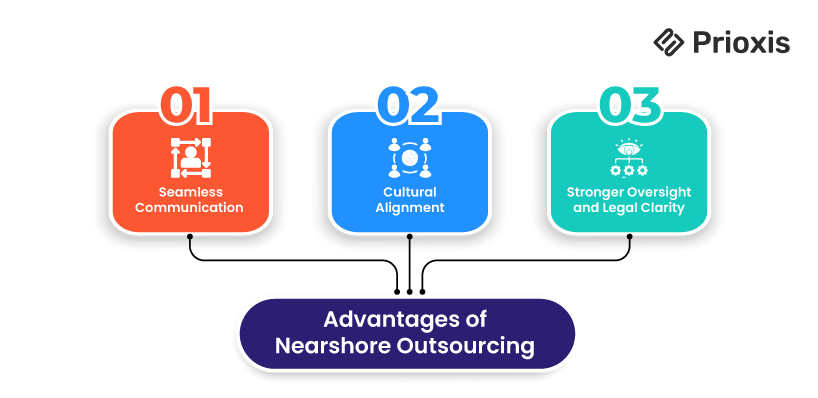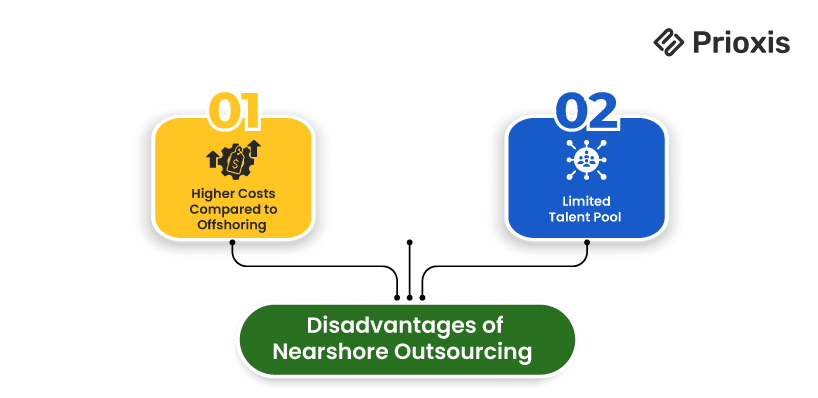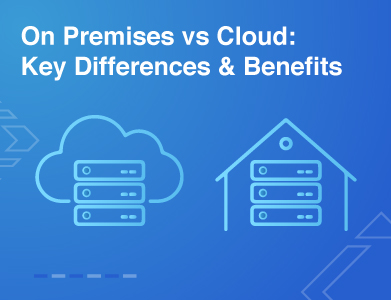Expertise
Anyone who has considered launching a digital product has likely encountered the terms Offshore Software Development and Nearshore Software Development.
Despite how they sound, these terms are not related to coastlines or oceans. Instead, they refer to outsourcing software development to companies located in other countries. Offshore Software Development typically means working with teams in distant countries, while Nearshore Software Development refers to collaborating with teams in nearby regions. Both models fall under broader strategies like Offshore IT Outsourcing and Nearshore Development Outsourcing, which are commonly used to extend technical capabilities beyond local teams.
Many businesses choose this approach because finding the right experts locally can be challenging or expensive. Outsourcing allows them to access skilled professionals from abroad, helping to reduce costs and speed up development without compromising quality.
What is Offshore Outsourcing?
Offshore outsourcing is a business strategy where companies delegate their software development tasks to teams based in distant countries. The goal is often to reduce operational costs, access a wider talent pool, or accelerate project timelines without compromising on quality.
Many businesses explore offshore outsourcing when local hiring becomes either too expensive or too limited in scope. Offshore outsourcing solves this by giving companies access to a much larger and more diverse talent market. By working with development teams overseas in countries across India or Eastern Europe, companies can find skilled professionals at more competitive rates.
Whether you need specialists in AI, cloud architecture, mobile apps, or a specific programming language, chances are someone overseas has the exact skill set you are looking for. This global reach is one of offshores greatest strengths — and it is something nearshore options may not always match.
That said, offshore outsourcing is not just about stretching your budget. It is also about staying agile and competitive. With the right processes, communication tools, and a willingness to occasionally coordinate across time zones, offshore partnerships can lead to long-term success. Yes, there might be a few early meetings and late replies, but access to world-class talent often makes it a fair trade.
Pros and Cons of Offshoring
If you’ve ever considered building a digital product and thought, “Why is hiring a developer in my city as expensive as buying a second-hand yacht?”, you’re not alone. Offshoring offers an appealing way to extend development capacity without overstretching internal resources.
Advantages of Offshore Outsourcing
1. Significant Cost Reduction
One of the most appealing aspects of offshore outsourcing is the financial benefit. Companies based in high-cost regions such as the US, UK, or Canada often find that hiring offshore teams can reduce development costs by a considerable margin. Developers in distant regions frequently offer competitive rates without sacrificing quality, making it possible to allocate budget more strategically. This makes it possible to build high-quality digital products while keeping expenses under control — something every finance team appreciates.
2. Broader Talent Availability
Instead of being limited to your local hiring pool, offshoring opens the door to a wide range of technical experts across different countries. Whether you need developers with experience in specific frameworks or access to entire dedicated teams, offshoring can provide that flexibility. Offshore outsourcing opens access to a much larger pool of global talent, allowing companies to find the right expertise, regardless of location.
3. Access to Specialized Skills
Offshore teams often bring diverse experience across various industries and technologies. Countries known for IT outsourcing frequently invest in advanced education programs, especially in engineering and computer science. This means companies can quickly onboard developers with the specific skills needed, from common frameworks to emerging technologies, without extensive recruitment efforts or inflated salary demands.
Cons of Offshore Outsourcing
1. Cultural Gaps
Working across different cultures can sometimes lead to misunderstandings. For example, some cultures avoid giving direct negative responses, which may cause confusion around timelines or expectations. What sounds like agreement might actually be a polite way of saying, “I’ll try.” This is not a flaw in character, but rather a difference in communication style that requires awareness and adaptation.
2. Communication requires extra care
Working across languages and cultures increases the chances of misunderstandings. A simple instruction might be interpreted differently, and feedback loops can become slower without clear, well-documented processes.
3. Less visibility and hands-on control
Managing a remote team halfway across the world means you may not always have real-time visibility into day-to-day progress. To keep projects on track, offshoring requires strong project management, well-defined milestones, and regular updates.
What is Nearshore Outsourcing?
Nearshore outsourcing is the practice of working with a software development team located in a nearby country, usually within the same or a similar time zone. This model offers a balance between cost savings and easier collaboration, making it a popular choice for companies that value convenience alongside technical expertise.
Unlike offshore outsourcing, nearshore partnerships reduce the challenges that often come with long-distance coordination. Similar working hours, overlapping holidays, and cultural similarities can contribute to smoother communication and faster decision-making.
Businesses often choose nearshore outsourcing when they want to extend their development capabilities without dealing with major time zone gaps or language barriers. While it may not offer the same level of cost reduction as offshore models, it often provides greater efficiency and alignment, especially for projects that require frequent interaction or real-time collaboration.
Pros and Cons of Nearshoring
Nearshoring is often seen as the outsourcing equivalent of choosing a café one block away instead of across town. It feels familiar, easy to reach, and you rarely need to repeat yourself on a video call. The time zones align, the cultural gaps are minimal, and collaboration becomes less of a scheduling exercise and more of a conversation.
But convenience comes at a cost. Nearshore developers often charge more than their offshore counterparts, and the talent pool, while qualified, may not be as deep or diverse. So while nearshoring might appeal to those who prefer predictability, businesses focused on scaling faster and spending smarter often find offshore outsourcing to be the more strategic path.
Advantages of Nearshore Outsourcing
1. Seamless Communication
One of the biggest strengths of nearshore outsourcing is how naturally communication flows. With similar time zones, it becomes easier to schedule calls, provide feedback, and maintain real-time collaboration. If needed, arranging an in-person meeting or an on-site visit is also much more practical, making the relationship feel more like a partnership than a remote transaction.
2. Cultural Alignment
Nearshore teams often share similar cultural values and work habits with their clients, which leads to smoother collaboration. Studies have shown that a lack of cultural compatibility is one of the top reasons outsourcing partnerships fail. Working with a nearshore team helps reduce that risk, as both sides are more likely to interpret feedback and expectations in the same way.
3. Stronger Oversight and Legal Clarity
When your development partner is based in a nearby country, it is easier to manage intellectual property, conduct audits, or resolve legal matters. Many nearshore partners fall under similar regulatory environments, which can make contract negotiations and data protection compliance more straightforward.
Disadvantages of Nearshore Outsourcing
1. Higher Costs Compared to Offshoring
While nearshoring is often more affordable than building an in-house team, it usually does not match the cost efficiency of offshoring in short, it’s cheaper than onshore, pricier than offshore. For example, hiring a developer in Mexico or Canada may cost less than in Silicon Valley, but it will still likely be more expensive than working with a team in India, Eastern Europe, or Southeast Asia.
2. Limited Talent Pool
Neighbouring countries may not always have the volume or variety of tech professionals required for your project. This can become especially challenging when searching for developers with niche skills or experience in a specific domain. As a result, sourcing the right team might take longer or require trade-offs in expertise.
Nearshore vs Offshore Outsourcing: Key Differences
Outsourcing software development has become a smart move for businesses looking to innovate without hiring an army of full-time developers. Whether you're a Startup with limited resources or a growing company aiming to move faster, outsourcing offers flexibility and scale. The real question is not whether to outsource, but how.
Two common models are nearshore and offshore outsourcing. Both have their strengths, but depending on your goals, one may quietly outshine the other.
Location and Time Zone
Nearshore outsourcing typically involves working with teams in nearby countries that share similar working hours. It sounds convenient on paper. Offshore outsourcing, on the other hand, means collaborating with teams farther away, often in different time zones.
While nearshore may save you from doing time zone math, offshore can offer a unique advantage. Your project continues to progress overnight, so you wake up to completed tasks instead of unread emails. With the right rhythm, this round-the-clock workflow feels less like a challenge and more like a productivity cheat code.
Cultural Fit
Cultural differences are a natural part of global collaboration. Offshore teams may bring different communication styles or work habits, but most experienced software development companies know how to adapt to international clients. Many have already mastered the art of Slack threads, weekly stand-ups, and politely nodding on video calls even when the internet freezes.
Nearshore teams often share similar cultural contexts, which can make initial collaboration feel easier. Still, cultural alignment tends to grow with time. If your team communicates clearly and sets shared expectations early on, offshore teams can integrate smoothly and contribute as if they were just down the hall.
Cost and Efficiency
Let’s talk numbers. Offshore outsourcing is well-known for its cost-effectiveness. Lower labor costs in many offshore destinations allow companies to build high-quality solutions without breaking the bank. This isn’t just about saving money but making the most of it.
Nearshore outsourcing can be more expensive, especially when compared hourly. While you may gain faster feedback loops, you might also end up paying premium rates for proximity. For companies balancing speed with sustainability, offshore often strikes a more practical balance between cost and capability.
Talent Access
Offshore providers often operate in tech-forward regions with deep talent pools. Whether you need a machine learning engineer, mobile developer, or someone fluent in three frameworks and two databases, the odds are good you’ll find them offshore.
Nearshore teams may be easier to onboard quickly, but the talent pool is typically smaller. When project demands grow or specialized skills are required, offshore partners often have the scale and expertise to step in without delay.
Which Model Works Best?
If your project needs constant back-and-forth or daily brainstorming sessions, nearshore might be worth considering. But if your priority is building efficiently, scaling quickly, and stretching your budget without sacrificing quality, offshore outsourcing quietly becomes the smarter choice.
With the right communication habits and a capable partner, the distance fades and what remains is a productive, high-performing extension of your team.
Outsourcing Model Checklist: Offshore vs Nearshore
Choosing between nearshore and offshore outsourcing depends on your priorities, project scope, and internal capabilities. Use this checklist to weigh your options and select the model that fits your business best.
✔ Choose Offshore Outsourcing If:
- You are aiming to significantly reduce development costs
- Access to a broader, global talent pool is important to your project
- Your internal team is equipped to manage remote collaboration effectively
- Time zone differences are manageable or even beneficial to your workflow
- Your project scope is well-defined and does not require daily involvement
- You need to scale development quickly without increasing fixed overhead
✔ Choose Nearshore Outsourcing If:
- You prefer working with teams in similar time zones for easier coordination
- Frequent real-time communication is essential for your development process
- Cultural alignment and shared work habits are a priority for your team
- You value quick issue resolution and shorter feedback loops
- Your project involves iterative development and close collaboration
- You are willing to invest slightly more for smoother communication dynamics
The Bottom Line
Whether you are expanding your team for a specific project or addressing a shortage of specialized skills within your company, outsourcing software development can be a practical and cost-effective solution. It not only helps reduce internal workload but also amplify delivery timelines.
Nearshore Development Outsourcing brings several advantages, including reduced costs, shared time zones, cultural alignment, and access to skilled professionals in nearby regions. These benefits often lead to smoother collaboration, improved team morale, and better long-term outcomes for your business. For companies that value frequent communication and real-time feedback, Nearshore Software Development can be particularly effective.
That said, claiming Nearshore Software Development is always superior to Offshore Software Development would be misleading. Every business has different needs. Some may find the best results through a mix of nearshore and offshore models, while others may discover that Offshore IT Outsourcing better fits their goals—especially when aiming for significant cost savings or when tapping into specialized global talent.
In the end, the right choice depends on your goals, your timelines, and your comfort level with collaboration across borders.
At Prioxis, we’ve delivered over 100 successful projects across industries such as healthcare, fintech, e-commerce, and real estate. We are proud to be recognized as a top-rated firm on Clutch and a Microsoft Gold Partner. If you’re looking for a reliable technology partner, we’re here to help.

